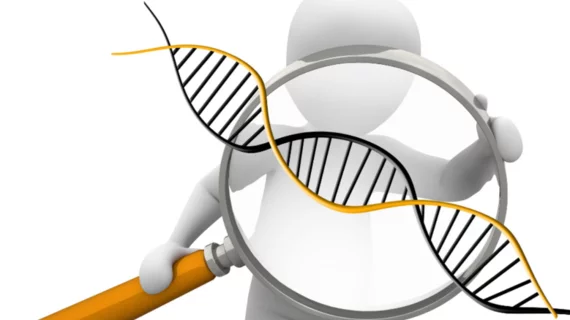Mutations in three-dimensional structures of the genome may be a cause of autism
Researchers from the RIKEN Center for Brain Science (CBS) in Japan looking into the genetics of autism spectrum disorder (ASD) discovered a unique genetic mutation may contribute to the condition. This mutation is unusual because of the three-dimensional structure of the genome, meaning it is able to affect neighboring genes known to be linked to ASD, possibly explaining why patients can have the condition without any direct genetic mutation linked to ASD. The study is published in Cell Genomics.
The study authors note that any condition with high degree of heritability cannot be explained simply by looking at the part of the genome that codes for proteins. They suggest the answer could lie in the non-coding regions of the genome that ultimately control whether or not the proteins are actually produced.
The team at CBS examined new mutations—de novos—that are not inherited from one’s parents to conduct their study, which utilized a dataset of the genomes of over 5,000 families. Focusing on TADs—specific three-dimensional structures of the genome that interact with nearby genes—the researchers found that de novo mutations in promoter regions did heighten the risk of a patient being diagnosed with ASD, but only when located near TADs that contained genes known to be associated with ASD.
The study authors said this could explain why mutations increase the risk of ASD even when the mutations are not in protein-coding regions or in the promoters themselves.
“Our most important discovery was that de novo mutations in promoter regions of TADs containing known ASD genes are associated with ASD risk, and this is likely mediated through interactions in the three-dimensional structure of the genome,” study lead author Atsushi Takata, MD, PhD, from CBS said in a statement on the findings.
To validate their results, the researchers utilized the CRISPR/Cas9 system to modify the DNA of stem cells, inducing mutations in targeted promoters. As anticipated, they noted that a single genetic change in a promoter led to alterations in an ASD-associated gene within the same TADs. Further, since multiple genes associated with ASD and neurodevelopment exhibited changes in the mutant stem cells, Takata analogizes the phenomenon to a genomic "butterfly effect," wherein a single mutation disrupts disease-related genes dispersed across distant genomic regions.
Further research involving more families and patients is crucial for better understanding ASD’s genetic roots, but the researchers said this discovery could inspire the development of new diagnostic and therapeutic strategies for patients with severe ASD.
“At the very least, when assessing an individual’s risk for ASD, we now know that we need to look beyond ASD-related genes when doing genetic risk assessment, and focus on whole TADs that contain ASD-related genes,” Takata explained. “Further, an intervention that corrects aberrant promoter-enhancer interactions caused by a promotor mutation may also have therapeutic effects on ASD.”
The full study can be read at the link below.

